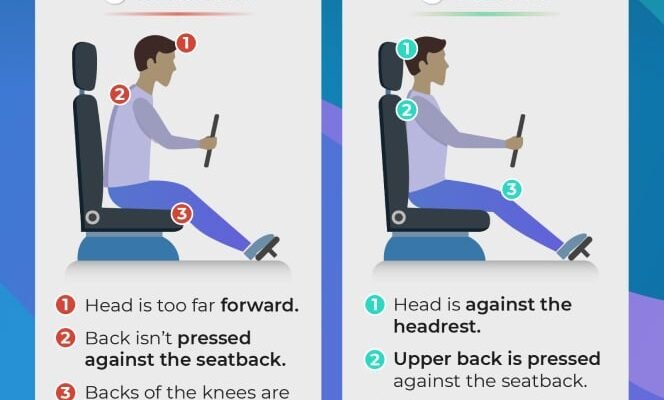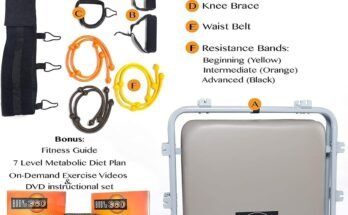Good posture while driving is essential. It prevents discomfort and promotes safety.
Driving for long hours can strain your body. Poor posture can lead to back pain, neck pain, and fatigue. Adjusting your driving position can make a huge difference. Small changes can improve your comfort and overall health. Proper alignment helps you stay alert and focused.
In this blog post, we’ll explore practical tips to improve your posture while driving. From seat adjustments to ergonomic accessories, you’ll discover easy ways to enhance your driving experience. Ready to drive with ease? Let’s get started!
Importance Of Good Posture
Good posture helps you feel better. It makes your back strong. Strong backs hurt less. You breathe easier, too. Easy breathing helps your heart. A healthy heart means more energy. Energy helps you stay awake. Staying awake is important when driving. Good posture reduces stress. Less stress means happier driving. Happy drivers are safer drivers.
Bad posture can cause problems. Your back may hurt more. Neck pain can happen too. Pain can last a long time. Long-lasting pain can make life hard. It can be hard to move. Moving is important for health. Health problems may get worse. Worse health affects driving. Driving can become unsafe. Unsafe driving can lead to accidents. Accidents are scary. Scary things make life tough.
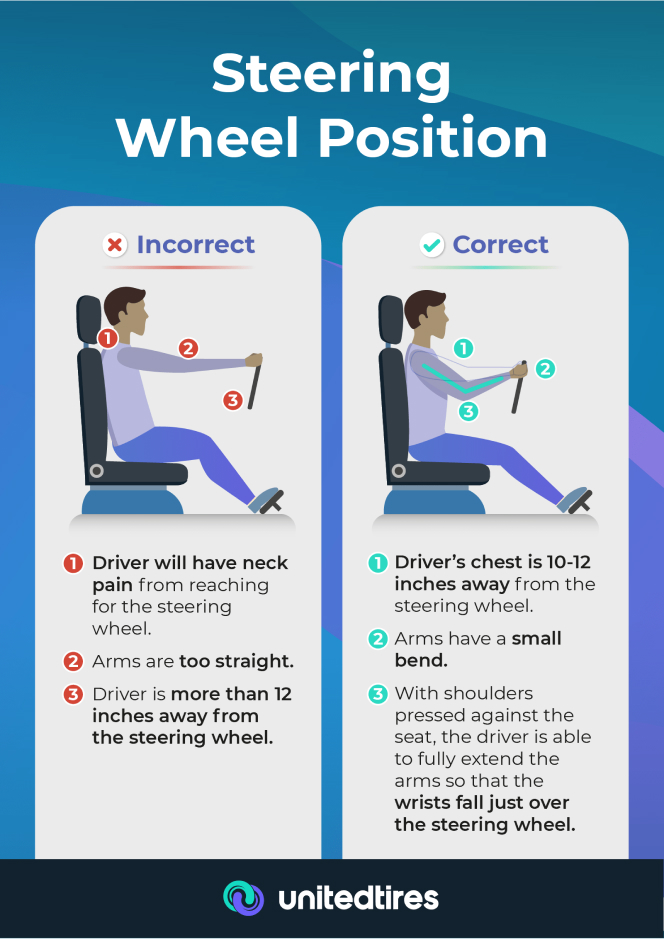
Common Posture Mistakes
Slouching is a common mistake many drivers make. It puts extra pressure on your back. This leads to discomfort and pain. Keeping your back straight helps. It supports your spine and reduces strain. Always adjust your seat to sit upright. A small pillow can help support your lower back. This keeps you from slouching.
An incorrect seat position can cause pain and fatigue. Make sure your seat is not too far back. Your knees should be slightly bent. Feet must reach the pedals easily. Adjust your seat height. Your eyes should be level with the road. Proper seat position helps prevent neck and shoulder pain. Always check your seat before driving.
Adjusting Your Seat
Adjusting your seat properly can help improve posture while driving. Ensure your seat supports your back and shoulders comfortably. Adjust mirrors to avoid straining your neck.
Seat Height
Set your seat height so you can see the road clearly. Your hips should be level with your knees. This helps reduce pressure on your lower back. Make sure your feet reach the pedals without strain. Your thighs should rest comfortably on the seat. This helps maintain good blood flow.
Backrest Angle
Adjust the backrest angle to support your spine. A slight recline can be more comfortable. This angle helps prevent slouching. Your back should press against the seat. This maintains the natural curve of your spine. Keep your shoulders relaxed but supported. This reduces tension in your upper back.
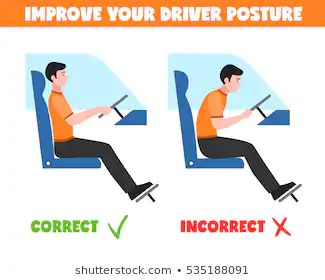
Steering Wheel Position
Adjust the steering wheel to the correct height. Your hands should be at 9 and 3 o’clock positions. This helps maintain better control and comfort. Keep your elbows slightly bent. Your wrists should rest on the wheel, not your hands. This reduces strain and fatigue.
Sit at a safe distance from the steering wheel. Your arms should reach the wheel easily. Avoid stretching or leaning forward. Ensure your back touches the seat. This prevents slouching and back pain. Your knees should also be slightly bent. Adjust the seat if necessary. Comfort is key for long drives.
Using Lumbar Support
Using lumbar support while driving can significantly improve your posture. It helps maintain the natural curve of your spine, reducing back pain. This simple addition to your car seat encourages better alignment.
Types Of Support
There are different types of lumbar support. Some popular options include foam cushions, inflatable pillows, and built-in car seat supports. Foam cushions are soft and comfortable. Inflatable pillows can be adjusted to your liking. Built-in supports are often found in modern cars. Each type offers unique benefits. Choose one that suits your needs best.
Proper Placement
Correct placement is key. Place the lumbar support at the small of your back. This area is just above your hips. It helps maintain the natural curve of your spine. Do not place it too high or too low. A proper position ensures comfort and support. Adjust the seat if necessary. Keep your back straight while driving. This reduces strain and prevents pain.
Foot Placement
Pedal interaction is key to safe driving. Feet should be placed firmly on the pedals. This helps with control. Avoid resting your foot on the brake pedal. It can cause accidents. Keep your heel on the floor. Use the ball of your foot to press the pedal. This gives better control. It also reduces fatigue.
Resting Position matters too. Keep your left foot on the footrest. This keeps your legs relaxed. Avoid placing both feet on the pedals. It can cause confusion. Adjust the seat to support your feet. Make sure there is enough legroom. This helps with comfort and control.
Taking Breaks
Long drives can cause stiffness. It’s important to take breaks. Stretching helps relax muscles. Simple stretches can ease tension. Reach your arms overhead. Then, stretch your legs. Twist your torso gently. This can improve blood flow.
Short walks can help too. Get out of the car. Walk for five minutes. This will keep your body active. It prevents stiffness. Walking improves circulation. It can refresh your mind. Make it a habit. Regular breaks are crucial.
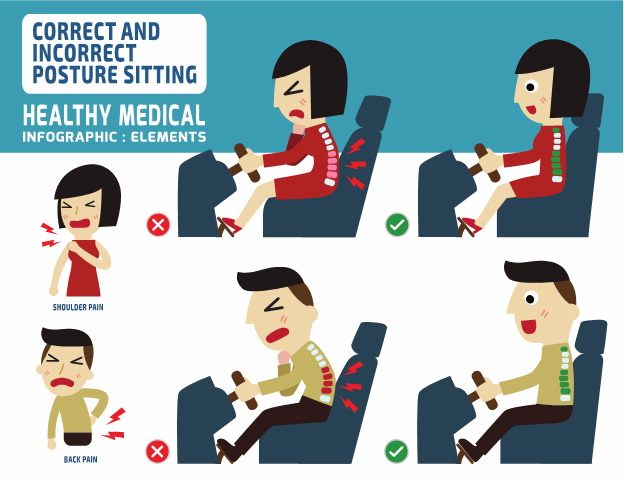
Exercises For Better Posture
Strong muscles support good posture. Focus on your back and core. Try exercises like planks and bridges. These help to build strength. Do these exercises daily. You will notice a difference.
Good posture needs flexible muscles. Stretching is very important. Stretch your shoulders and neck. A few minutes each day is enough. Try neck tilts and shoulder rolls. They are simple but effective. Consistent practice will help you improve.
Frequently Asked Questions
How Can I Correct My Driving Posture?
Adjust your seat height for clear road visibility. Keep your back straight against the seat. Position your hands at 9 and 3 o’clock on the wheel. Ensure your feet comfortably reach pedals. Tilt your rearview mirror slightly upwards to encourage sitting upright.
How To Stop Slouching While Driving?
Adjust your seat and mirrors to promote proper posture. Use a lumbar cushion for back support. Keep shoulders relaxed and maintain a firm grip on the steering wheel. Take regular breaks to stretch and reset your posture. Practice mindful driving to maintain awareness of your body position.
How Can I Improve My Positioning While Driving?
Adjust your seat and mirrors for better visibility. Sit upright to reduce fatigue. Position hands at 9 and 3 o’clock on the steering wheel.
How Do I Stop Leaning While Driving?
Adjust your seat for proper posture. Keep both hands on the wheel at the 9 and 3 o’clock positions. Use lumbar support if needed. Make frequent short breaks to stretch. Regularly check your posture while driving.
Conclusion
Improving posture while driving enhances comfort and health. Small changes make big differences. Adjust your seat and mirrors. Use a cushion for support. Take breaks during long drives. Stretch your muscles often. Stay mindful of your posture. A healthy posture reduces strain and fatigue.
Feel better on the road. Drive safer and more comfortably. Regular practice leads to habit. Prioritize your posture every time you drive. It’s a simple step towards better well-being. Happy driving!
